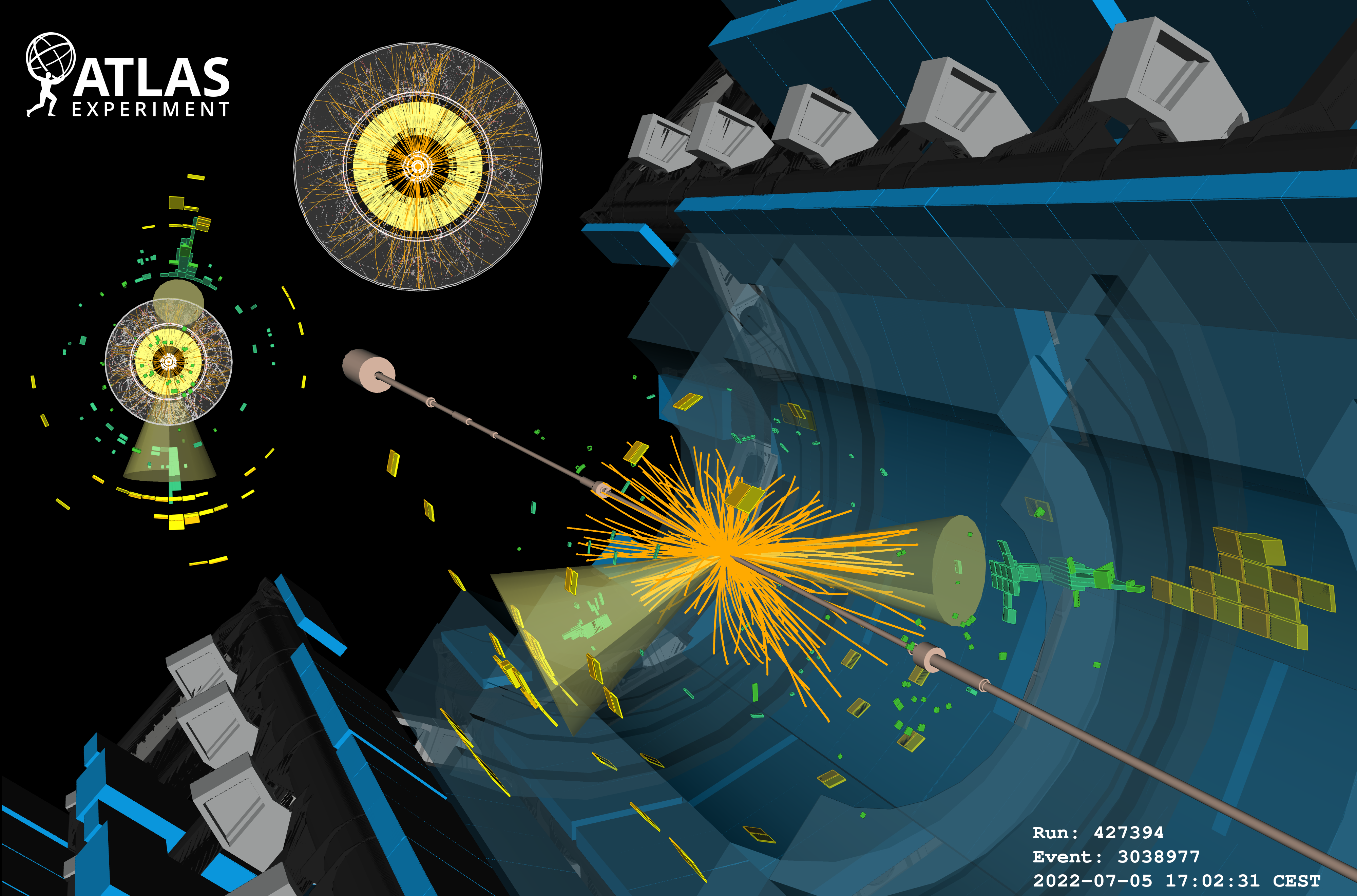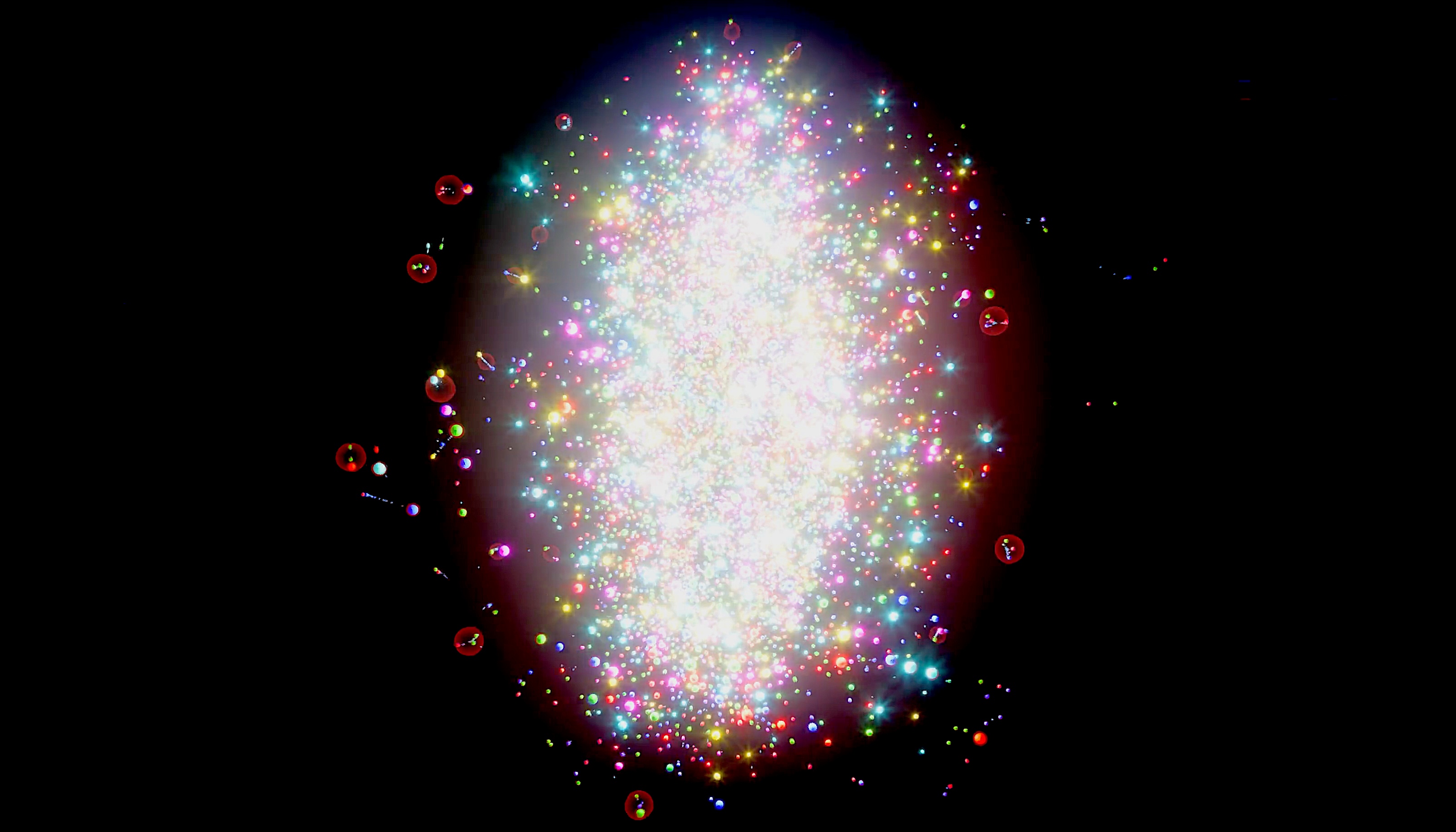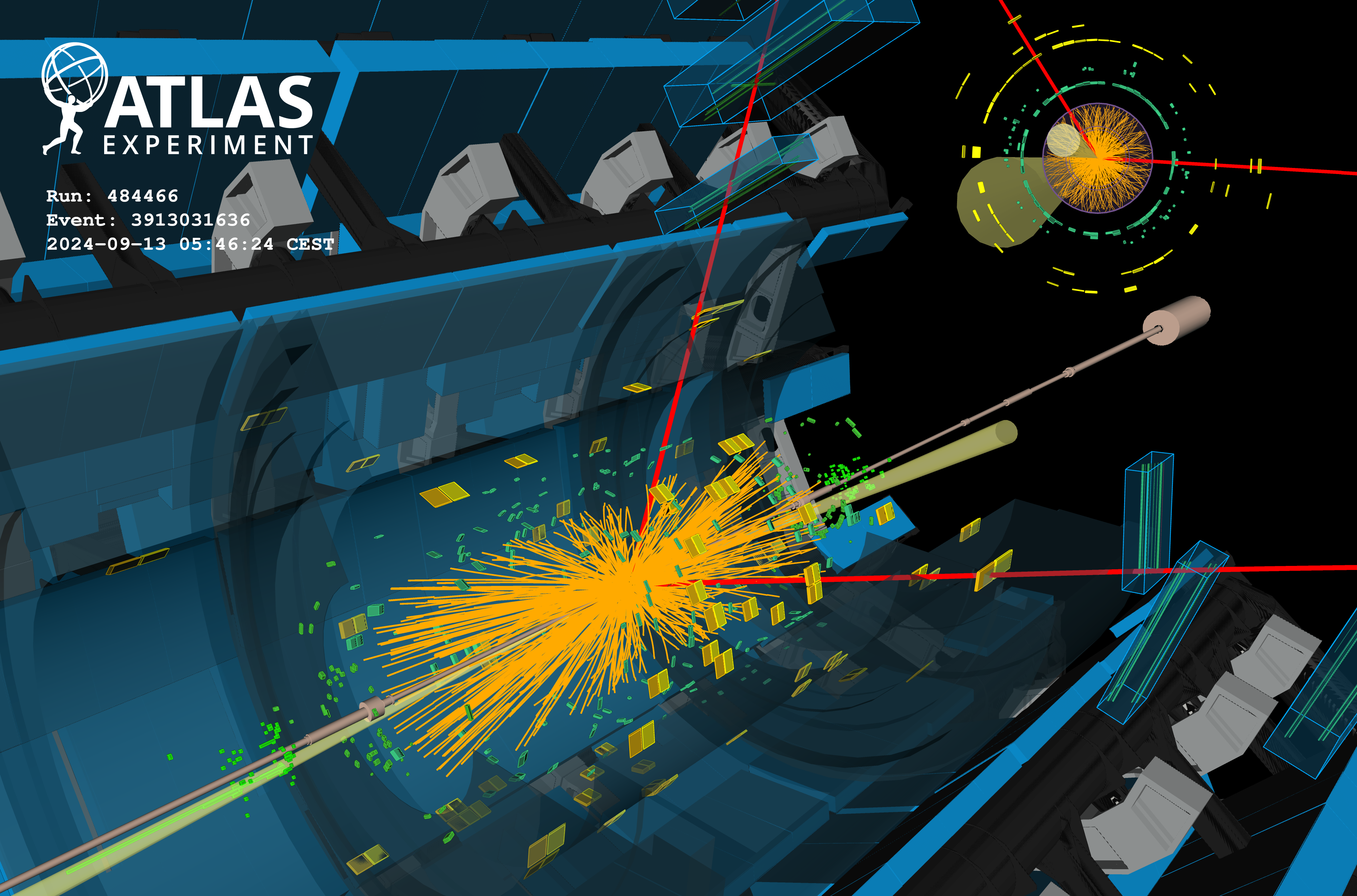ATLAS Experiment records “first physics” at new high-energy frontier
5 July 2022 | By
“We have proton collisions in the ATLAS experiment.” At 16.47 CEST, the Large Hadron Collider (LHC) officially kicked off its third period of operation (Run 3). The LHC is colliding proton beams at a world-record-breaking energy of 13.6 tera electron volts (TeV). The higher beam energy and intensity of Run 3 will allow the ATLAS experiment to push the very limits of its physics research.
Today’s declaration of “stable beams” marks the end of the LHC’s re-commissioning period, which began in April 2022. Within a month from today, the LHC will have reached its full Run-3 operating intensity. ATLAS has now switched on all systems to begin recording data to be used for physics analysis. The LHC will run around the clock for nearly 4 years, with only some technical stops during the winter months, delivering an unprecedented wealth of proton and heavy-ion collisions.
“The ATLAS experiment stands ready to record this new harvest of data,” says Andreas Hoecker, ATLAS Spokesperson. “The new run promises to more than triple the currently accumulated dataset at a new energy frontier. We have prepared a broad scientific programme, taking advantage of new upgrades to our experiment."
The return of LHC beams comes after more than three years of upgrade and maintenance work, with new detector systems and electronic infrastructure installed 100 metres underground in the ATLAS cavern. “We are excited to see the ATLAS control room busy again as we prepare for Run-3 data taking,” says Jörg Stelzer, ATLAS Run Coordinator. “We have spent the past several months re-commissioning the experiment, and re-establishing the expertise and procedures that led to the outstanding data-taking efficiency of Run 2. This will be our model for Run 3.”
The higher beam energy and intensity of LHC Run 3 will allow the ATLAS experiment to push the very limits of its physics research.
“Run 3 will see our sensitivity to new physics processes increase, as we explore new types of collision events that were previously out of reach,” says Pamela Ferrari, ATLAS Deputy Physics Coordinator. “During the shutdown, we paid particular attention to improving our online event filtering system (or ‘trigger’). By refining our selection upstream with new detector systems, we should be able to identify some of the most difficult-to-spot signatures which could be left by new particles.”
Among the event signatures that would benefit from the new triggers is dark matter production. “The search for dark matter is a very important part of our physics research programme,” says Andreas. “We know from numerous observations of gravitational effects that dark matter exists in the universe. If it is made of particles, as most physicists expect, these may interact with protons or the Higgs boson and be produced in LHC collisions.” Dark matter is invisible and can only be spotted when produced with other, visible particles. The dark matter then appears as localised missing energy in a collision event, which physicists can measure.



Of course, a centrepiece of the ATLAS physics programme remains the Higgs boson. Discovered by the ATLAS and CMS experiments just ten years ago in 2012, the Higgs boson plays a unique role in the universe. While it was discovered in Run 1 essentially through its interactions with force-carrier bosons, the larger and higher-energy Run-2 data sample allowed ATLAS to measure Higgs-boson interactions to matter particles (fermions) of the heaviest, third generation, and to observe all of its major production modes. In Run 3, these measurements will be further improved and the Higgs boson interactions with second-generation particles, such as muons, and its interaction with itself will become a focus.
"The Higgs sector is a rich environment for study, as precise measurements of its properties can yield spectacular results,” adds Pamela. “Constraining and eventually measuring its self-coupling will inform us about the energy potential of the Higgs field, which drives the phase transition in the early universe that transformed massless elementary particles into massive ones.”
These are but a few of the scientific highlights expected from Run 3. “As we enter this new era of exploration, it is important to champion the competence, dedication and hard work of the several hundreds of ATLAS members who implemented the upgrades and maintenance of our experiment during the long shutdown,” says Andreas. "Their work planted the seeds for the upcoming data harvest."
The many improvements to the sophisticated trigger and data acquisition system permit a much wider range of collision events to be explored, compared to Run 2, while maintaining the same particle acceptance rate. "In addition to the new hardware, ATLAS upgraded large parts of its software, simulation and computing environment to boost performance, save resources and enable it for use with heterogeneous computing systems," concludes Andreas.
The launch of the LHC Run 3 was streamed live on CERN’s social media channels, with live commentary in five languages (English, French, German, Italian, Spanish). Watch the stream below.
Learn more
- LHC Run 3: physics at record energy starts tomorrow, CERN Press Statement, 4 July 2022
- 10 years of discovery with the Higgs boson, ATLAS Press Statement, 4 July 2022
- About ATLAS upgrades during Long Shutdown 2
- ATLAS Run 3 Resources







